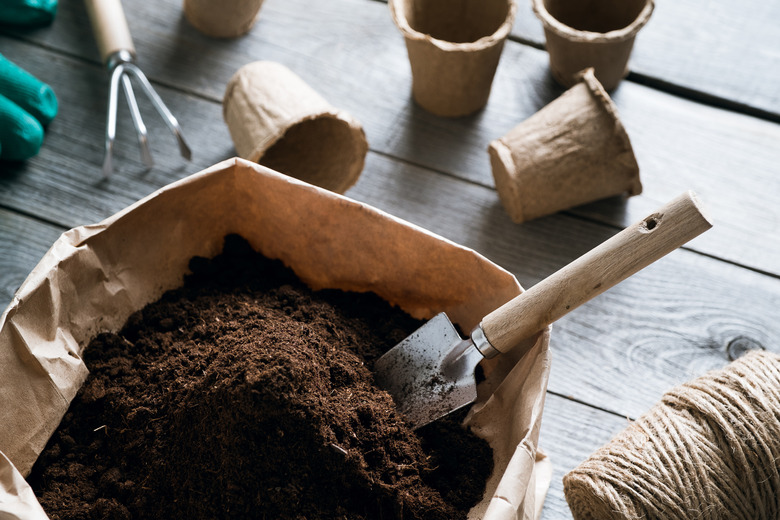Milorganite Fertilizer Vs. Scotts Fertilizer
There are dozens of products available for fertilizing your lawn. Some are for winterizing. Some kill weeds while supplying nutrients for your lawn. Some include pesticides. Some are useful for brand new lawns, while others claim to revive old ones. There are organic options, like Milorganite fertilizer, and synthetic chemical blends, like those manufactured by the Scotts Company. Know what each offers before you choose one to apply.
Milorganite and Scotts Fertilizer Uses
Both Milorganite and Scotts lawn fertilizer are designed to nourish your grass. Because grass likely is the largest expanse of plants in your yard, and the one that receives the most abuse from weather, insects, drought and mold, it requires the most maintenance. It also needs fertilizing more frequently.
Applying Milorganite Vs. Scotts
Milorganite can be applied to the grass using a broadcast spreader, as can Scotts fertilizer. But it's easy to over-apply Scotts fertilizer, which results in burned grass. Minimize applications to early spring, midsummer, and late fall, and strictly follow the suggested settings for your spreader.
Milorganite is an organic fertilizer that contains very low amounts of nitrogen and won't burn the grass even if over-applied. Apply Milorganite in early spring, midsummer and late fall. If grass looks yellow or otherwise unhealthy, you can safely reapply Milorganite.
Fertilizer NPK Analysis
Bags of Milorganite and Scotts fertilizer display three numbers that refer to nitrogen (N), phosphorous (P), and potassium (K). Nitrogen is responsible for giving your grass its green color and facilitating growth. Phosphorous helps roots grow and develop. Potassium is necessary for overall plant health. The numbers indicate the distribution of each element within that fertilizer. For example, a bag that displays 30-12-9 indicates a mix of 30 percent nitrogen, 12 percent phosphorous, and 9 percent potassium.
Milorganite Vs. Scotts NPK Formulations
As a nitrogen-rich organic byproduct of the Milwaukee Metropolitan Sewage District (MMSD), the word "Milorganite" is an amalgamation of "Milwaukee Organic Nitrogen." The Milorganite Company notes that its product is comprised of heat-dried microbes that digested wastewater nutrients. Milorganite nitrogen fertilizer is a combination of six parts nitrogen, four parts phosphorous and zero potassium (6-4-0). It also contains 2.5 percent iron and 1.2 percent calcium.
Scotts fertilizer contains various combinations of nitrogen, phosphorous and potassium, depending on which formulation you're using. Scotts UltraFeed Turf Builder, which the Scotts Company recommends as a fast-acting and long-lasting product that provides nutrients for up to six months, is blended at 40 parts nitrogen, 0 parts phosphorus and 5 parts potassium (40-0-5). Scotts Winterizer contains 22 parts nitrogen, 2 parts phosphorous and 14 parts potassium (22-2-14). Scotts Weed and Feed contains 22 parts nitrogen, 3 parts phosphorus and 3 parts potassium plus an herbicide (22-3-3).
Different Fertilizer Turf Growth Rates
A high nitrogen count will cause your grass to become green, and Scotts fertilizer has it. But not only will the grass become greener, it will also grow at an accelerated rate. This causes more frequent mowing. Milorganite fertilizer contains a much lower amount of nitrogen but adds iron, which keeps the grass green but does not accelerate lawn growth. It is considered a slow-release fertilizer.
